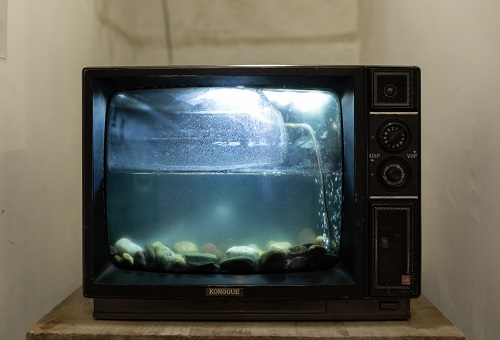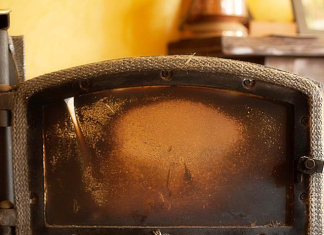The reality TV genre ostensibly allows TV viewers to peek into the real lives of people with whom, otherwise, they would have no contact. Reality shows keep the cameras on people auditioning for fame and recognition, wealthy housewives, Fair Go casino players, dysfunctional (rich) families, fashion models, beach bunnies, roommates, athletes, people involved in dating, love triangles, teen parents, starlets, people stranded on desert islands and others. Today, there seems to be a reality show for almost every possible behavior or life situation. Let’s see to reality TV history.
How did TV go from scripted dramas and comedies to shows that seem almost voyeuristic in nature?
Reality TV
Reality TV began to become popular in the mid-1990s. Over the years, such shows often dominated ratings as viewers were drawn to the dramatized drama of real peoples everyday lives. Many viewers would be surprised to hear that the first reality TV show was actually on public television and appeared in 1973 as the non-commercial Public Broadcasting System’s American Family.
American Family aired over the course of two months, offering an intimate look at a single American family while, at the same time, critiquing American society. Since PBS isn’t dependent on advertising revenue it was able to broadcast its experimental program without facing pressure from advertisers who generally prefer that their ads appear in shows that don’t rock the boat.
American Family was broadcast to an audience that was accustomed to light sitcoms where, by the end of the show, everything resolved to everyone’s satisfaction. Today’s audiences are a bit more sophisticated so they are more open and accepting of “unscripted dramas.” They also acknowledge a reality show’s staging and are aware, at some level, that a “reality show” doesn’t reflect true reality.
American Family didn’t come close to the manipulative and staged dramas of today’s reality TV. Whereas American Family was designed to present a somewhat accurate portrayal of an American family, today’s reality shows are meant to entertain – often through shock and outrage. They don’t make any attempt to raise larger social, cultural, philosophical or existential questions. Rather, they feature aspirational worlds rather than mirrors of real people and real lives.
Today’s reality TV is simply meant to offer an escape from reality, something that American Family never considered.
American Family
American Family was a revolutionary type of TV program that producer Craig Gilbert envisioned as a way to force audiences to confront issues of importance to American society as they related to individual American families. The show focused on the Loud family of Santa Barbara California – father Bill, mother Pat and their five children.
Whereas today’s reality TV constructs and contrives situations, American Family was meant to involve an observational filming style – a cinéma vérité approach — that simply recorded natural interactions within the family rather than involving a complex editorial arrangement.
Gilbert believed that by simply filming a family in the course of their day-to-day activities, the camera would capture significant insights. He wanted to film a “normal” family because he thought that that would be the best way to put America’s societal issues in the spotlight.
He sought to focus on confusion over gender roles, individualism, the changing technological landscape, evolving ideas regarding work and self-expression, tensions arising as a result of the generation gap and other family dynamics.
These issues were making families anxious, Gilbert thought, and needed to be looked at in an open and honest way. There were sitcoms that focused on such issues but they did so with laugh tracks that covered over discomfort and had endings that resolved all the issues into nice, tight packages. Arguments and conflicts were not explored in any depth and the shows skirted many relevant cultural subjects.
Normal Family
Gilbert’s solution was to find a “reassuringly comfortable…..perfect” family that viewers could relate to. He wanted An American Family to show viewers a “normal” American family and then raise larger issues for people to consider. The divisive issues came out faster than anyone expected – son Lance revealed his homosexuality and issues that had been bubbling under the surface for years between parents Bill and Pat came spewing out, causing the couple to start divorce proceedings.
Critics and viewers were shocked to find the kinds of subjects that were simmering within this, supposedly “normal” family. Pat Loud asked Gilbert “What the hell is this series supposed to be about?” to which Gilbert responded “It’s about how you and I and everyone in this room and everyone in this country is fumbling around trying to make sense out of their lives.”
One reviewer acknowledged that “Most viewers will experience the shock of recognition.” Hundreds of viewers sent letters to Gilbert in which they thanked him for the series and expressed their sentiments that they no longer felt so alone in their family struggles.
In many ways, American Family was a success, even though it aired 12 episodes and disappeared. The Loud family’s criticism – even though they reviewed footage for approval before each episode was packaged – discouraged any imitations. But the impact that it had on the era is undeniable.
The reality shows of today bear no resemblance to American Family in their unrealistic and highly scripted portrayals of various populations. They aim for commercial appeal which was not a concern of American Family which, as a public broadcasting project, was under no obligation to make money.
Most importantly, today’s reality TV doesn’t challenge viewers in any type of thoughtful or critical manner. But reality TV of today does owe a debt of gratitude to its American Family forerunner.









